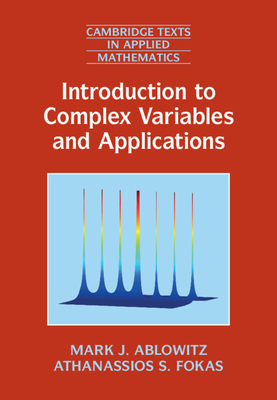Monte Carlo Methods
暫譯: 蒙地卡羅方法
Barbu, Adrian, Zhu, Song-Chun
- 出版商: Springer
- 出版日期: 2020-02-25
- 售價: $4,200
- 貴賓價: 9.5 折 $3,990
- 語言: 英文
- 頁數: 307
- 裝訂: Hardcover - also called cloth, retail trade, or trade
- ISBN: 9811329702
- ISBN-13: 9789811329708
-
相關分類:
Computer Vision、Machine Learning
立即出貨 (庫存 < 3)
買這商品的人也買了...
-
 $665GDB Pocket Reference (Paperback)
$665GDB Pocket Reference (Paperback) -
 $1,568Beautiful Data: The Stories Behind Elegant Data Solutions (Paperback)
$1,568Beautiful Data: The Stories Behind Elegant Data Solutions (Paperback) -
 Debug Hacks 除錯駭客 -- 極致除錯的技巧與工具
Debug Hacks 除錯駭客 -- 極致除錯的技巧與工具$580$458 -
 Machine Learning: A Probabilistic Perspective
Machine Learning: A Probabilistic Perspective$4,880$4,636 -
 CUDA 並行程序設計 : GPU 編程指南 (CUDA Programming: A Developer's Guide to Parallel Computing with GPUs)
CUDA 並行程序設計 : GPU 編程指南 (CUDA Programming: A Developer's Guide to Parallel Computing with GPUs)$894$849 -
 Lectures on Quantum Mechanics, 2/e (Hardcover)
Lectures on Quantum Mechanics, 2/e (Hardcover)$2,500$2,375 -
 Vim 實用技巧, 2/e (Practical Vim : Edit Text at the Speed of Thought, 2/e)
Vim 實用技巧, 2/e (Practical Vim : Edit Text at the Speed of Thought, 2/e)$354$336 -
 Computer Age Statistical Inference : Algorithms, Evidence, and Data Science (Hardocver)
Computer Age Statistical Inference : Algorithms, Evidence, and Data Science (Hardocver)$2,980$2,831 -
 Introduction to the Theory of Computation, 3/e (Hardcover)
Introduction to the Theory of Computation, 3/e (Hardcover)$1,490$1,460 -
 Random Measures, Theory and Applications
Random Measures, Theory and Applications$7,340$6,973 -
 A Tour of C++, 2/e (繁體中文版)
A Tour of C++, 2/e (繁體中文版)$480$379 -
 精通 Python|運用簡單的套件進行現代運算, 2/e (Introducing Python: Modern Computing in Simple Packages, 2/e)
精通 Python|運用簡單的套件進行現代運算, 2/e (Introducing Python: Modern Computing in Simple Packages, 2/e)$880$695 -
 GAN 對抗式生成網路 (GANs in Action: Deep learning with Generative Adversarial Networks)
GAN 對抗式生成網路 (GANs in Action: Deep learning with Generative Adversarial Networks)$750$593 -
 $449玩轉3D視界 —— 3D機器視覺及其應用
$449玩轉3D視界 —— 3D機器視覺及其應用 -
 Mathematics and Computation: A Theory Revolutionizing Technology and Science (Hardcover)
Mathematics and Computation: A Theory Revolutionizing Technology and Science (Hardcover)$1,680$1,646 -
 圖解資料結構 -- 使用 C++
圖解資料結構 -- 使用 C++$560$437 -
 Introduction to Complex Variables and Applications (Paperback)
Introduction to Complex Variables and Applications (Paperback)$1,480$1,450 -
 Nonparametric Models for Longitudinal Data: With Implementation in R
Nonparametric Models for Longitudinal Data: With Implementation in R$2,920$2,774 -
 深度學習 -- 最佳入門邁向 AI 專題實戰 (過版書特價)
深度學習 -- 最佳入門邁向 AI 專題實戰 (過版書特價)$1,200$399 -
 $2,565The Algorithm Design Manual, 3/e (德國原版)
$2,565The Algorithm Design Manual, 3/e (德國原版) -
 The Suttanipata: An Ancient Collection of the Buddha's Discourses Together with Its Commentaries
The Suttanipata: An Ancient Collection of the Buddha's Discourses Together with Its Commentaries$2,890$2,746 -
 The Long Discourses of the Buddha: A Translation of the Digha Nikaya
The Long Discourses of the Buddha: A Translation of the Digha Nikaya$2,070$1,967 -
 A Compact Course on Linear Pdes
A Compact Course on Linear Pdes$2,800$2,660 -
 An Introduction to Kolmogorov Complexity and Its Applications (Hardcover)
An Introduction to Kolmogorov Complexity and Its Applications (Hardcover)$4,440$4,218 -
 Lectures on Optimal Transport
Lectures on Optimal Transport$2,420$2,299
相關主題
商品描述
This book seeks to bridge the gap between statistics and computer science. It provides an overview of Monte Carlo methods, including Sequential Monte Carlo, Markov Chain Monte Carlo, Metropolis-Hastings, Gibbs Sampler, Cluster Sampling, Data Driven MCMC, Stochastic Gradient descent, Langevin Monte Carlo, Hamiltonian Monte Carlo, and energy landscape mapping. Due to its comprehensive nature, the book is suitable for developing and teaching graduate courses on Monte Carlo methods. To facilitate learning, each chapter includes several representative application examples from various fields. The book pursues two main goals: (1) It introduces researchers to applying Monte Carlo methods to broader problems in areas such as Computer Vision, Computer Graphics, Machine Learning, Robotics, Artificial Intelligence, etc.; and (2) it makes it easier for scientists and engineers working in these areas to employ Monte Carlo methods to enhance their research.
商品描述(中文翻譯)
本書旨在彌合統計學與計算機科學之間的鴻溝。它提供了蒙地卡羅方法的概述,包括序列蒙地卡羅(Sequential Monte Carlo)、馬可夫鏈蒙地卡羅(Markov Chain Monte Carlo)、梅特羅波利斯-哈斯廷斯(Metropolis-Hastings)、吉布斯取樣器(Gibbs Sampler)、叢集取樣(Cluster Sampling)、數據驅動的MCMC(Data Driven MCMC)、隨機梯度下降(Stochastic Gradient descent)、朗之萬蒙地卡羅(Langevin Monte Carlo)、哈密頓蒙地卡羅(Hamiltonian Monte Carlo)以及能量景觀映射(energy landscape mapping)。由於其全面性,本書適合用於開發和教授有關蒙地卡羅方法的研究生課程。為了促進學習,每一章都包含來自各個領域的幾個代表性應用範例。本書追求兩個主要目標:(1)向研究人員介紹如何將蒙地卡羅方法應用於計算機視覺(Computer Vision)、計算機圖形學(Computer Graphics)、機器學習(Machine Learning)、機器人技術(Robotics)、人工智慧(Artificial Intelligence)等更廣泛的問題;(2)使在這些領域工作的科學家和工程師更容易使用蒙地卡羅方法來增強他們的研究。
作者簡介
Adrian Barbu received his PhD in Mathematics from Ohio State University in 2000 and his PhD in Computer Science from the University of California, Los Angeles in 2005. His research interests are in machine learning, computer vision and medical imaging. He received the 2011 Thomas A. Edison Patent Award with his co-authors from Siemens for their work on Marginal Space Learning. In 2007 he joined the Statistics Department at Florida State University, first as an assistant professor, and since 2013 as an associate professor.
Song-Chun Zhu received his PhD degree in Computer Science from Harvard University in 1996. He is currently a professor of Statistics and Computer Science, and director of the Center for Vision, Learning, Cognition and Autonomy, at the University of California, Los Angeles. His main research interest has been in pursuing a unified statistical and computational framework for vision and intelligence, which includes the Spatial, Temporal and Causal And-Or graph (STC-AOG) as a unified representation and numerous Monte Carlo methods for inference and learning. He has published over 200 papers in the areas of computer vision, statistical learning, cognition, AI, and robot autonomy. He has received a number of honors, including the David Marr Prize in 2003 for image parsing, and twice Marr Prize honorary nominations in 1999 for texture modeling and in 2007 for object modeling. In 2008 he received the J.K. Aggarwal Prize from the Intl. Association of Pattern Recognition for "contributions to a unified foundation for visual pattern conceptualization, modeling, learning, and inference". In 2013 he received the Helmholtz Test-of-Time Prize for a paper on image segmentation. He has been a fellow of IEEE Computer Society since 2011, and the principal investigator leading several ONR MURI and DARPA teams working on scene and event understanding and cognitive robots under a unified mathematical framework.
作者簡介(中文翻譯)
Adrian Barbu 於2000年在俄亥俄州立大學獲得數學博士學位,並於2005年在加州大學洛杉磯分校獲得計算機科學博士學位。他的研究興趣包括機器學習、計算機視覺和醫學影像。他與西門子(Siemens)的共同作者因其在邊際空間學習(Marginal Space Learning)方面的工作而獲得2011年托馬斯·愛迪生專利獎。2007年,他加入佛羅里達州立大學的統計系,最初擔任助理教授,自2013年起擔任副教授。
Song-Chun Zhu 於1996年在哈佛大學獲得計算機科學博士學位。他目前是加州大學洛杉磯分校的統計學和計算機科學教授,以及視覺、學習、認知和自主中心的主任。他的主要研究興趣在於追求一個統一的統計和計算框架,以解決視覺和智能問題,其中包括作為統一表示的空間、時間和因果與或圖(Spatial, Temporal and Causal And-Or graph, STC-AOG)以及多種蒙地卡羅方法用於推理和學習。他在計算機視覺、統計學習、認知、人工智慧和機器人自主等領域發表了超過200篇論文。他獲得了多項榮譽,包括2003年因影像解析獲得的David Marr獎,以及1999年因紋理建模和2007年因物體建模的兩次Marr獎榮譽提名。2008年,他因「對視覺模式概念化、建模、學習和推理的統一基礎的貢獻」獲得國際模式識別協會的J.K. Aggarwal獎。2013年,他因一篇有關影像分割的論文獲得Helmholtz Test-of-Time獎。自2011年以來,他一直是IEEE計算機學會的研究員,並擔任多個ONR MURI和DARPA團隊的首席研究員,這些團隊在統一數學框架下研究場景和事件理解及認知機器人。






















